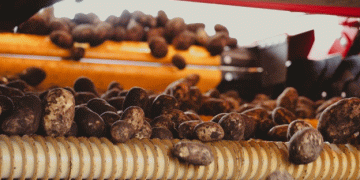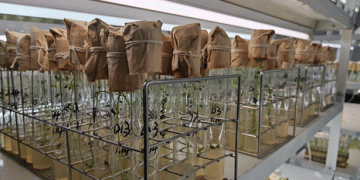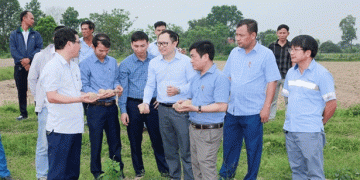#GenerativeAI #AgriculturalMarket #CropManagement #LivestockManagement #PrecisionAgriculture #GeneticImprovement #DataAvailability #DataQuality #EthicalImplications
Market Overview
The volume of generative AI in the agricultural market is expected to reach approximately $1,083.9 million by 2032, compared to $125 million in 2022, growing at a compound annual growth rate (CAGR) of 24.8% during the forecast period from 2022 to 2032.
Generative artificial intelligence (AI) is rapidly being adopted in the field of agriculture. Generative AI refers to the use of algorithms and models to create new content based on existing input data; when applied in agriculture, it has the potential to transform various aspects from crop optimization to livestock management.
One of the key areas where generative AI makes a significant contribution to agriculture is crop management. By analyzing vast amounts of data such as soil conditions, weather patterns, and past crop yields, generative AI models provide farmers with information and recommendations that help make informed decisions regarding planting schedules, fertilizer application rates, and irrigation schedules, resulting in increased crop yields while optimizing resource efficiency.
Livestock management can also benefit from generative AI. By utilizing machine learning algorithms, farmers can more effectively monitor animal behavior, health, and well-being. Generative AI models can analyze sensor data collected through wearable devices on animals, such as accelerometers or temperature sensors, to identify patterns or anomalies, enabling early detection of diseases, optimizing feeding strategies, and overall improving animal welfare.
Precision agriculture, which involves applying resources based on specific plot conditions, can be significantly enhanced through the use of generative AI models. By gathering information from satellites, drones, and ground sensors, these artificial intelligence models create detailed field maps with changes in soil composition, moisture levels, and crop conditions. With this knowledge, farmers can efficiently distribute fertilizers, pesticides, and water, simultaneously reducing waste and minimizing environmental impact.
Generative AI opens up significant prospects for crop breeding and genetic improvement in agriculture. By analyzing large sets of genomic data, artificial intelligence models can identify genetic markers associated with desirable traits such as disease resistance, yield potential, nutritional value, and more. This enables breeders to make more informed decisions when selecting parent plants for crossbreeding and expedite the development of improved crop varieties.
While artificial intelligence offers numerous benefits, challenges remain. The key ones include data availability and quality. Training accurate artificial intelligence models requires large datasets with diverse information, which can be challenging to obtain in developing regions with limited connectivity or data infrastructure. Issues related to data confidentiality/ownership as well as ethical consequences of using AI-driven farming methods may also arise.
The agricultural market is poised to witness significant growth in generative AI adoption. With its potential to optimize crop management, livestock monitoring, precision agriculture, and genetic improvement, generative AI holds promise for enhancing productivity, efficiency, and sustainability in the agricultural sector. However, addressing challenges related to data and ethics will be crucial to realizing the full potential of generative AI in agriculture.





